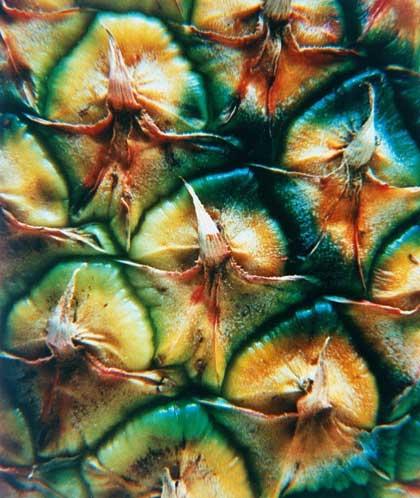Nobel Prize in Chemistry for the discovery of quasicrystals
2011/10/05 Lakar Iraizoz, Oihane - Elhuyar Zientzia
Quasicrystals, like crystals, are materials with ordered atoms, but this order does not have a repetitive pattern, as crystals usually have. They are currently known and synthesized in laboratories around the world. In the 1980s, however, Dan Shechtman had to fight for this atomic organization he had just discovered, as crystallographs and physicists considered impossible. It was finally accepted and Shechtman's discovery represented a change in the very definition of crystals. Hence the Nobel Prize in Chemistry this year.
Shechtman himself was surprised to see a refractive model that was considered impossible under the electron microscope. He studied aluminium and manganese glass. In particular, I tried to know which model the electrons were deviating when crossing this material. In fact, this deviation or diffraction of electrons shows the arrangement or distribution of atoms in the material.
Shechtman saw a refractive model of ten clear points in a circle. In the International Picture of Crystallography, in the most important reference guide of crystallography, no crystals with this structure appeared. In fact, in subsequent analyses he concluded that the material had a symmetry of five orders, and it was impossible for the material containing that symmetry to be crystal, since it is impossible for that symmetry to exist and that the atoms were ordered by a repetitive pattern.
When he attempted to publish an article informing of the discovery, he immediately received a negative response. Even when he informed scientists crystallography experts of his discovery, they turned against him. The head of his research team came to ask him to leave the group.
Shechtman then goes to the famous physicist John Cahn for help. Cahn himself reviewed Shechtman's data and consulted the crystallographer Denis Gratias to see if Shechtman had put his leg into something. However, they saw that the experiments were correctly performed. Finally, they published an article written between three in the journal Physical Review Letters and gradually accepted experts. Other crystallographers also realized that they had previously seen quasicrystals in their experiments. However, having models of “impossible” symmetry, it was deduced that they made some mistake and these crystals were discarded.
Scientists later clarified how materials with this symmetry have their atoms structured. For this purpose the gold number (< constant) and the Fibonacci series were used (in the Fibonacci series, each number is the sum of the previous two: 1, 1, 2, 3, 5, 8, 13, 21, 34, 55, 89, 144, etc. ). In fact, certain distances between atoms of quasicrystals are associated with a constant <. Atoms therefore have a regular distribution in quasicrystals, even if a recurrent pattern is not followed. In the Fibonacci series also the distribution of numbers is regular but not recurring.
Thus, once scientists accept the structure of quasicrystals, in 1992 the International Association of Crystallographers modified the definition of glass, giving for good: “any solid with discrete diffraction diagram”.

Gai honi buruzko eduki gehiago
Elhuyarrek garatutako teknologia




